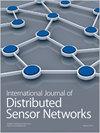基于社会传感器网络的灾害信息传播研究
IF 2.5
4区 计算机科学
Q3 COMPUTER SCIENCE, INFORMATION SYSTEMS
International Journal of Distributed Sensor Networks
Pub Date : 2022-03-01
DOI:10.1177/15501329221080666
引用次数: 2
摘要
突发灾害事件通常具有不可预测性和不可控性,如何实现灾害信息的高效准确传播是社会安全的重要课题。目前,将人类移动传感器和传统物理传感器相结合的社交传感器网络被广泛应用于突发事件的处理。先前的研究主要集中在人类流动模式对社交传感器网络的影响上。本文基于人类个体固有的自主性,提出了一种社会传感器信息传播模型,主要研究个体特征、社会特征和群体信息传播模式对社会传感器网络的影响。具体而言,人类传感器模型首先是基于人类自主性固有的社会和心理属性构建的。然后,通过考虑不同的传播媒介和人类互动偏好,提出了一对一、一对多和对等等各种信息传播模型。我们基于NetLogo平台模拟了灾害事件中的信息传播环境。评价矩阵用于测试社交传感器信息传播模型的性能,如事件传播覆盖率、事件传递时间和事件传递率。与流行病模型相比,社会传感器信息传播模型在提高灾害事件中信息传播的效率和准确性方面表现出优异的性能。本文章由计算机程序翻译,如有差异,请以英文原文为准。
Research on disaster information dissemination based on social sensor networks
Sudden disaster events are usually unpredictable and uncontrollable, and how to achieve efficient and accurate disaster information dissemination is an important topic for society security. At present, social sensor networks which integrate human mobile sensors and traditional physical sensors are widely used in dealing with emergencies. Previous studies mainly focused on the impact of human mobility patterns on social sensor networks. In this article, based on the inherent autonomy property of human individuals, we propose a social sensor information dissemination model, which mainly focuses on the impact of the individual characteristics, social characteristics, and group information dissemination mode on social sensor networks. Specifically, the human sensor model is first constructed based on the inherent social and psychological attributes of human autonomy. Then, various information dissemination models such as one-to-one, one-to-many, and peer-to-peer are proposed by considering different transmission media and human interaction preferences. We simulate the environment of information dissemination in disaster events based on the NetLogo platform. Evaluation matrix is applied to test the performance of social sensor information dissemination model, such as event dissemination coverage, event delivery time, and event delivery rate. With the comparisons to epidemic model, social sensor information dissemination model shows excellent performance in improving the efficiency and accuracy of information transmission in disaster events.
求助全文
通过发布文献求助,成功后即可免费获取论文全文。
去求助
来源期刊
CiteScore
6.50
自引率
4.30%
发文量
94
审稿时长
3.6 months
期刊介绍:
International Journal of Distributed Sensor Networks (IJDSN) is a JCR ranked, peer-reviewed, open access journal that focuses on applied research and applications of sensor networks. The goal of this journal is to provide a forum for the publication of important research contributions in developing high performance computing solutions to problems arising from the complexities of these sensor network systems. Articles highlight advances in uses of sensor network systems for solving computational tasks in manufacturing, engineering and environmental systems.

 求助内容:
求助内容: 应助结果提醒方式:
应助结果提醒方式:


